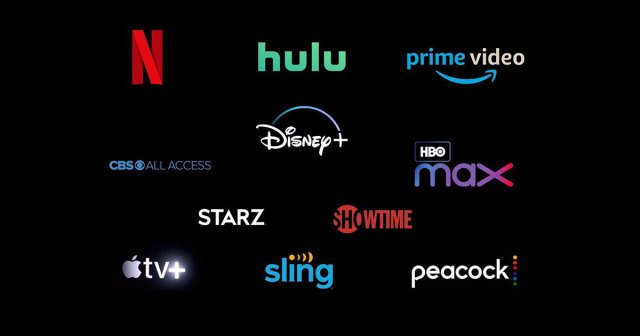NAB Show recently had the opportunity to sit down with Dan Rayburn to discuss his outlook on the broad competitive landscape of OTT Streaming and the various business, technological and consumer factors that will effect the industry over the next year. The below is an excerpt from our conversation.
NAB Show: With new streaming services including HBO Max and Peacock coming to the market in Q2, consumers continue to have many options when it comes to both live and on-demand video content. With so many choices available, what will be the primary differentiating factors for near term and long term success of these new OTT platforms?
Dan Rayburn: As consumers we all like having lots of choice, but with so many OTT services available for live TV, sports, movies and TV shows, consumers are definitely feeling overwhelmed. Many are going to have to start making hard choices of which content is most important to them and how much they are willing to spend per month, to get their video fix. The good news is that we all have different tastes and we also have a lot of AVOD services offering content without a subscription. These free services tend to lack premium content and newer TV shows and movies, but for some, that’s a tradeoff they are ok with. The good news is that new services like Peacock will offer a mix of different business models, with both live and VOD content, with different price points based on what you want to consume.
Measuring the success of OTT services will be done using different metrics, based on the business models of the parent company. For example, AT&T said if HBO Max helps to reduce the churn of AT&T Wireless subscribers by one basis point month, that would save AT&T $100M per month. But services from Hulu and Apple don’t involve wireless customers, since neither of those companies are a mobile carrier. So all of the OTT providers will measure success from different business standpoints, which is separate from how the industry and consumers measure the “quality” of the video. Content has and always will be king and reliability and ease of use come in just behind that. But we also have to keep in mind cost. Consumers have a limited budget and there will be different thresholds on what their maximum spend will be per month. It will vary, since we have different content tastes, but once it all shakes out, I expect many U.S. households will take 3-4 OTT services per month.
There are a lot of opinions in the industry on what the tipping point is for the number of services in the market and it’s a topic we’ll be discussing at the Streaming Summit in detail, with speakers from HBO Max, Starz, Amazon and others.
NAB Show: For subscription based services, will the measurement for subscriber growth be harder to quantify because of free trial offers such as we’ve seen with the launch of Disney+ and Apple TV+?
Dan: Disney just recently released subscriber numbers for Disney+, Hulu and ESPN+ saying that as of February 3rd, Disney+ had 28.6M subscribers, ESPN+ had 7.6M, Hulu has 30.7M. Disney also detailed what the average revenue per user (APRU) was and did comment that it was a little lower since Disney+ came to the market, do to all the discounts at launch. Apple hasn’t disclosed how many subscribers they have to Apple TV+ and since you get a free account for one year if you buy a new iPhone, iPad, or Mac, even with numbers we wouldn’t know how many subscribers Apple TV+ has that paid for the service. Over the last year we’ve seen much more transparency from companies on subscriber numbers and I expect that will continue. Alphabet, for the first time, released subscriber numbers for YouTube TV in February which hit 2M. So more data is coming to the market and the majority of it is being done to help keep investors updated, since these companies are all spending billions of dollars to launch new services in the market.
NAB Show: What will be the impact this year of all the AVOD services in the market that allow free streaming with advertising?
Dan: We’ve seen a big growth in the number of AVOD services in the market which now include Tubi, Xumo, Pluto TV, IMDb TV, YouTube, Roku Channel and others. For some consumers, they are most interested in free content and aren’t looking for the newest content or popular live sports. The majority of these services are also owned by larger companies where the free services are part of a larger business model. ViacomCBS owns Pluto TV, IMDb TV is owned by Amazon, Google owns YouTube and the AVOD services are part of a larger video content strategy. It’s too early to know the impact to SVOD services from AVOD offerings, other than the fact that all of these videos services are competing for out time and we only have so many hours in the day we can watch video.
NAB Show: With Netflix recently announcing that consumers will be able to stop preview videos from automatically playing, and with the OTT landscape becoming increasingly competitive, do you anticipate more of an emphasis by OTT plaforms on enhancing the overall consumer experience?
Dan: Every single OTT platform, be it live, SVOD, AVOD or a combination of them are heavily investing and focusing on the user experience and have been for years. From video startup times, search and discovery, voice control, player UX/UI features and HDR, to the reliability of the video playback, quality of experience (QoE) is priority one. With new OTT services coming to the market they have to look and work just as good as their competitors, if not better. There are a lot of very talented engineering departments at all of these companies pouring over tons of user experience data, to see how they can continue to improve on the QoE, with many making changes in real-time. We’ll have multiple sessions at the Streaming Summit talking about QoE, including a presentation by the former Director of Operations Engineering at Netflix, who will discuss how Netflix achieved insane video streaming QoS through deep integration.
NAB Show: Recently, the media reported that Apple had hired one of Netflix’s engineers. Would this be considered a type of precursor of a future technological arms race to ensure that all these streaming services are on the leading edge of innovation?
Dan: The success of any OTT service is based on a large volume of talented engineers, not just one person. One new engineer hire does not change a company’s strategy or success in the market and many media outlets, like the one that reported on the hire, simply want to write for headlines. That said, there are a lot of companies spending money right now to get the best talent possible as they grow and build out their video services. Developers, product managers, data analysts and others that know the streaming video stack are high in demand right now and that’s not expected to slow down any time soon. If you add up just the top six OTT platforms by the number of subscribers, combined, they will spend more than $25B this year to license, produce and deliver content. It’s a great time to be in the streaming media industry for those that have the expertise.
Dan Rayburn, Streaming Media Expert, Consultant, Chairman, Streaming Summit, NAB Show and Principal Analyst, Frost & Sullivan, is considered to be one of the foremost authorities, speakers, and writers on streaming media technology, content, and business models. An avid blogger, author and analyst, Dan is often referred to as the “voice of the industry” and has been quoted in more than a thousand news items by nearly every major media outlet over the past twenty years. His blog is one of the most widely read sites by content owners, Wall Street money managers and industry executives in content, broadcast and media sectors. mail@danrayburn.com; 917.523.4562

